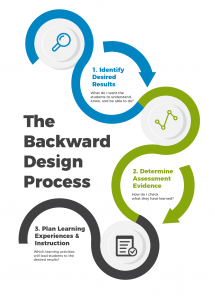
The most important educational product that a faculty develops is a course. We might develop various teaching materials independent of courses but the course is the primary component of university education, which is the chief occupation of the faculty. Alas, it is often a lonely development and not too seldom an ad hoc activity.
When a manufacturer develops a product it spends much effort in understanding the needs of potential customers in order to fashion the product. Then it considers its own production, marketing and customer support for the product, as well as the handling of the product long term: handling new versions and upgrade and maintenance of sold products, and eventually the decommission and recycling of the product. There are probably many more aspects that they consider than these.
Compare this with the development of a course. The purpose of the course might be well-defined and the contents bounded by prior and later courses in a program (and the program defines many parameters for all included courses). However when a free-standing course is being developed (as for continued education), then it becomes more challenging to set the parameters. For each course, you need to decide at least these:
- Subject and contents
- Level of the material and needed prerequisites
- Volume of work and awarding of credits
- Format and mode of teaching
- Need and means for formal examination
- Collaborations in development and teaching
- Channels for marketing
- Economy for development and teaching
- System support for registration, teaching and collaboration, and examination
To determine these aspects, the course developer needs input from potential students and representatives of the employers of the students when it concerns professional training; the developer needs administrative and systems support as well as marketing help from the university, and willing colleagues who may peer review or contribute to the proposal and contents. This is a major investment of university resources that might create an engagement for many years. Hence, my view is that we create educational products in the form of courses too casually without defining a target group and then designing the course for it. We lack long-term planning for teaching, maintaining and upgrading course contents and format; we do not plan for growth, for closing of the course, and we do not build a community for further offering of courses. In short, we need to be more professional in the way that we conduct our profession.
When a course is developed as an open course, for instance as continuous education for people outside the university, then you first need a clear rationale for why it should be developed and offered at all. Who will bear the cost of it, and invest the time and take responsibility for it in the long run (do you have the endurance)? You better plan for success which means a long engagement with possible a large audience. Open courses require more resources than closed (ie, courses requiring admission and perhaps payment), the financial model and the reward is uncertain and the risk of failure is higher, especially of not reaching an audience in today’s loud market of education. It is not as easy as it appears when the concept is presented.
So when you ask yourself whether to give an open course, the answer might be ‘No’. If it isn’t, then you have hopefully though through all the work you and others need to do, and you have weighed it against the benefits of giving the course.
And by critically evaluating the basic qualifications, you have made a sounder decision for designing a valuable and expensive product.